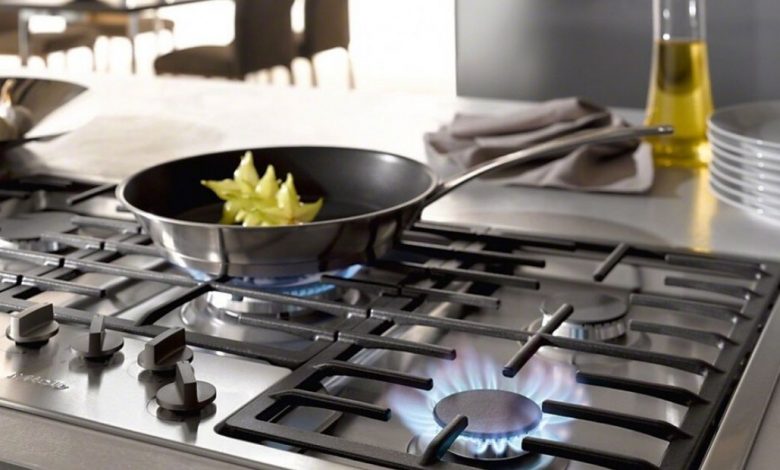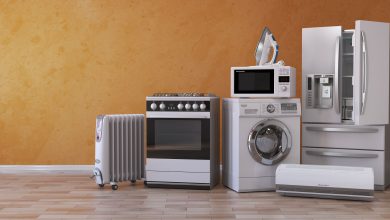5 Safety Tips That You Should Follow During Use of Gas Hob in Your Kitchen

Liquified Petroleum Gas has a high potential for ignition. Around a gas stove, the smallest amount of negligence could result in severe harm. When using a gas hob, you really must use the utmost caution. Concerns over gas stoves’ potential for injury continue to be widespread worldwide.
The present gas stove has many advantages but can potentially be hazardous. It resembles a double-edged sword. You can purchase the best gas hob near you with the assistance of skilled people.
What exactly is gas cooking?
Turning the gas cooktop’s button releases gas and converts it to heat. The button and gas burner perfectly control the energy supply. When you lower gas, the flame shrinks.
What are the advantages and drawbacks of using gas in the kitchen?
Benefits:
- Cooking with gas is more cost-effective than cooking with electricity.
- You are free to make the heat supply adjustments on your own.
- Your kitchen appliances will warm up quite quickly if you use a significant fire.
- You do not require purchasing any new kitchenware at this time.
- It is feasible to achieve a high temperature when stir-frying when using a burner explicitly designed for woks.
Drawbacks:
- A significant amount of heat is lost, and energy consumption is inefficient.
- Cleaning can be difficult because of the pan supports and burners.
- Gas stove tops need the use of an exposed fire, making them a less than ideal choice for food preparation.
Using a gas stove in your household might be dangerous if you don’t follow these five safety rules:
Control the Radiation: Even though the gas range has excellent flame control, it still needs to be maintained and monitored in the correct manner. You have to make sure that you choose the right flame intensity by choosing from Low, Moderate, or High. In addition, you need to arrange the kitchenware so that it is directly over the origin of the heat. Because of the potential for accidents that this could cause, we ask that you turn off the burner whenever it is not in use. A fan should not be used in the kitchen at any time since it has the potential to snuff out the flame and lead to a release of gas.
Upkeep of a Stove:
- Maintain your gas stove.
- Check for leaks and obstructions periodically.
- Time how fast it requires for the fire to spark after switching on the gas.
- Clean the gas stove regularly. Rusting pipes can cause leaks—periodically clean stove holes to prevent food from obstructing gas. Soapy water cleans the stove.
Lighting the Match:
- As crucial as fire control is appropriate ignition. Do not put food on the gas burner before lighting it.
- Use automatic ignitions with caution. Immediately turn off the gas if it malfunctions and reactivate the engine.
- Manual ignition requires a lighter. Keep the matchstick not so close to the stove if using a matchbox. When not using the gas stove, turn off the knobs.
Pick the Best Utensils: Gas stoves require unique cooking accessories. On high, block the fire with the pan bottom. The fire shouldn’t leave the cooking item because it could start a fire. Glass cookware won’t work on a gas hob, so choose metal. Before usage, dry the object since dripping water can extinguish the flame. Copper or steel makes pots. Aluminum pots work on a gas burner.
Precautionary Principles in the Kitchen:
- Gas burners demand utmost vigilance.
- Gas stoves aren’t for kids.
- Keep kitchenware handles away from the flame.
- If you rarely use a utensil, put it on the back shelf.
- Immediately switch off the fire after use.
- Knocking on handles should be avoided. When cooking, don’t leave the burner alone.
Installing a gas range comes with several benefits as well as some drawbacks. Your individual needs should guide your decision between the several models of available gas stoves. Before purchasing a gas range that you expect will endure for many years, it would be prudent to conduct an extensive study.
Summary:
In most Indian households, gas cooking is a staple. Gas is more efficient than electricity at providing heat, whether using a large or small kitchen appliance. It is also usually cheaper to buy gas than electricity in many areas.
The two options for gas: natural gas and propane, have differences that need to be considered when choosing which to use. Using this propane and natural gas guide, you can make an informed decision about which is best for you based on the difference in price, cooking, and equipment.
Choosing a piece of equipment designed to work with the fuel of your choice is crucial to ensuring that the fuel burns safely. It is possible to save money by purchasing a conversion kit from the manufacturer of your equipment if you need to change fuels after purchasing it. Other than that, here are some kitchen safety tips you can follow to make sure your gas hob is safe to use.



